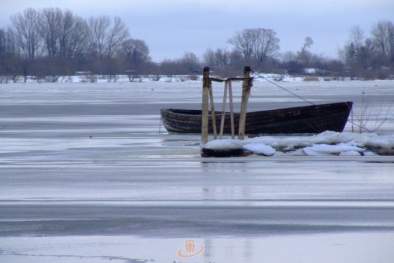Need for such guidance came up during implementation of a pilot project in the Venta and Vitrupe River basins where several challenges related to ecological, hydro-chemical and morphological features of rivers emerged.
Main objective of the project, implemented from period of April – November 2011, was to train volunteers and carry out practical works to limit algae overgrowth, remove sediment and wooden debris and improve potential spawning sites for salmon, sea trout and lampreys.
Project team organized training for river managers and voluntary river keepers followed by activities to improve hydro-morphological and biological functions of the Venta and Vitrupe Rivers. The project was implemented by company “L.U.Consulting” in cooperation with GWP Latvia and Daugavas Savieniba.
Venta River is a river in north-western Lithuania and western Latvia. Its source is near Kuršėnai in the Lithuanian Šiauliai County. It has a length of 346 km and flows into the Baltic Sea at Ventspils in Latvia. The main salmon spawning and nursery habitats are situated in the middle part of the river below the waterfall Ventas Rumba. The river partially belongs to EU network of protected areas Natura 2000. There are 2 nature reserves in the river: “Ventas ieleja” (The River Venta Valley) and “Ventas un Skerveļa ieleja” (The Rivers Venta and Skervele Valleys).
Vitrupe River is typical medium sized river entering the Gulf of Riga. It has a length of 36 km totally accessible for salmon. The salmon and sea trout spawning and nursery habitat are situated in the lower and middle part of the river. There are no artificial migration obstacles, but there is one natural waterfall that allows for species that are good swimmers. The river partially belongs to the Natura 2000 network. There is a reserve of “Vitrupes ieleja” (Valley of Vitrupe).
The Guidelines available in Latvian language, is the first attempt in the country to explain practical methods of river basin management. It addresses major problems of Latvian streams such as pollution by nitrogen and phosphorus, sedimentation, deterioration of buffer zones around streams and others.
It also provides examples of innovative yet traditional methods tested during previous projects including “Place a Stone in the Stream” initiative utilizing stones to mitigate climate change and ensure survival of aquatic species threatened by lack of oxygen due to higher water temperature. Well placed stones slow down water flow and create favorable living conditions for water fauna.
The guideline specifically addresses the following:
- Eutrophication or great increase of phytoplankton in streams. Negative environmental effects include depletion of oxygen in the water, which induces reductions in specific fish and other animal populations
- Wooden debris in streams and their management
- Improvement of riparian zone functionality which is an interface between land and a river or streams.
- Management of sedimentation processes.
- Improvement of river self purifying capacity.
- Construction of riffle areas in rivers to increase levels of oxygen proposed through innovative approach „Place a Stone in the Stream.
- Improve structure and change use of adjacent landscape
- Increase diversity of aquatic habitats through installment of stone structures.
The guidelines gives practical tips for river management activities on different scales, embracing both low cost local activities, as well medium scale multipurpose projects. So far, it’s not legally binding, however, the project team tries to make it unifying and science based, e.g. hydrobiology addressing a common problem of streams and small rivers overgrowth and biodiversity decline.
In the future, one of the proposals is to establish a tradition of Great Cleanup Day in April to involve local people, volunteers and water management in cleaning local streams and raise awareness on water issues.
Fore more information, please contact Maris Ozolins, e-mail: daugava2000[at]inbox.lv
Photo credit: Maris Belovs
